The Apple iPad Air 2 Review
by Joshua Ho on November 7, 2014 9:30 AM EST- Posted in
- Tablets
- Apple
- Mobile
- iOS
- ipad Air 2
Software: iOS 8
While hardware is important, the tablet ultimately needs compelling software in order to justify its place. Apple has done a great job of using the display’s extra real estate, although areas like Springboard are a bit lacking in information density when compared to the iPhone 6 Plus. Unlike the iPhone 6 Plus which usually only gives a multiple-pane view in landscape, the iPad can present more information all the time. While this may seem to be an artificial distinction, it’s really the 4:3 aspect ratio that improves information density for both orientations.
More notably, applications in the app store seem to be universally adapted for the iPad instead of being a stretched out iPhone version. It’s likely that this is because any iPhone-only application is a direct scaling rather than any proper interpolation, so at 1x mode the application is comically small and at 2x the application often looks horrific due to aliasing and upscaling artifacts. Both modes leave large levels of unused space in the display, so there’s a strong impetus to make a proper tablet application. The multitasking gestures continue to add to the tablet's functionality as well, which can be even quicker than normal multitasking. This is also helped by the use of two gigabytes of RAM, which noticeably reduces the amount of times that applications are kicked out of memory in my experience. As AArch64 can increase memory requirements it seems important for future iPhones and iPads to all ship with at least two gigabytes of RAM.
For the most part, these are already advantages that iPads have had for a while, so none of this really changes when compared to most other tablets, which have generally suffered from a relatively poor breadth of applications designed to take advantage of a larger tablet display. The one significant software feature to talk about here is TouchID, even though this is a hardware-driven feature. Similar to my experiences with TouchID on the iPhone, TouchID on the iPad makes a lot of sense. While there’s no NFC feature for Apple Pay, the same system works for online purchases which has a great deal of potential for any applications that utilize Apple Pay. The launch of iOS 8 also means that TouchID can be used as an alternate form of authentication for any application that uses the appropriate API, which is definitely nice as well. Of course, for basic unlock this system continues to work incredibly well, to the point where it’s often possible to accidentally unlock the device when turning it on with the home button.
However, there’s not much else to talk about. Unfortunately, while Apple has done a good job of developing the tablet it feels like there’s a lot of potential for new applications and other usage models that haven’t come to fruition. While the stylus is often seen as a negative for user experience, I suspect that the iPad would have for more value if a good pressure-sensitive stylus was included for note-taking and similar use cases. In addition, the lack of a proper multi-window system definitely detracts from the potential for the iPad to take on a productivity role. While these are all things that Samsung has done for the Galaxy Note line, these features aren’t really as well executed as they need to be for good user experience which leaves room for Apple to innovate in this area. It seems fully possible for an iPad to replace a ~20 mm thick convertible tablet for productivity and note taking, but proper development of these ideas hasn’t quite happened.
Unfortunately, as a function of the iPad’s size I find it hard to integrate into daily use. For the most part I don’t find myself missing the extra screen size when compared to a phablet like the iPhone 6 Plus, and this is likely to be Apple’s biggest issue as the iPhone 6 Plus can give much of the tablet functionality while still remaining relatively compact. While I’d be willing to put up with the extra size if there was compelling functionality that I wouldn’t be able to get on another formfactor, it feels like this uniqueness is lacking in the iPad. This doesn’t mean that there isn’t value to the iPad formfactor as there is a sizeable population of people that effectively use the iPad as their primary computing device, but for general browsing and comparable tasks I’ve never felt limited by the relatively small display of a phablet or smartphone. This means that there’s a significantly higher bar for utility, which is really the source of my concern. While the iPad’s software experience is excellently executed, after multiple generations it seems to be time to push in new directions for utility.


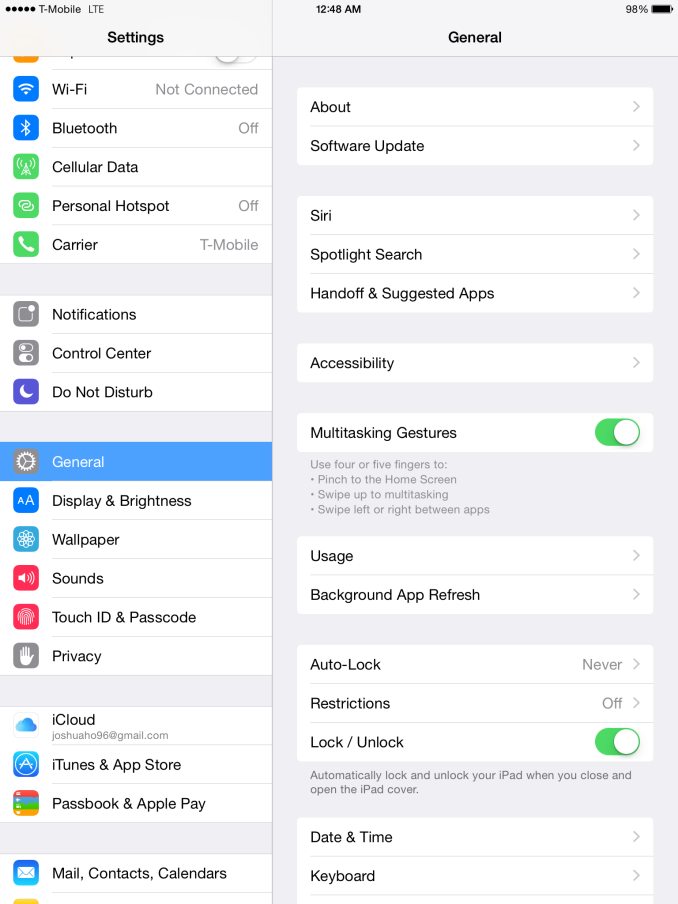
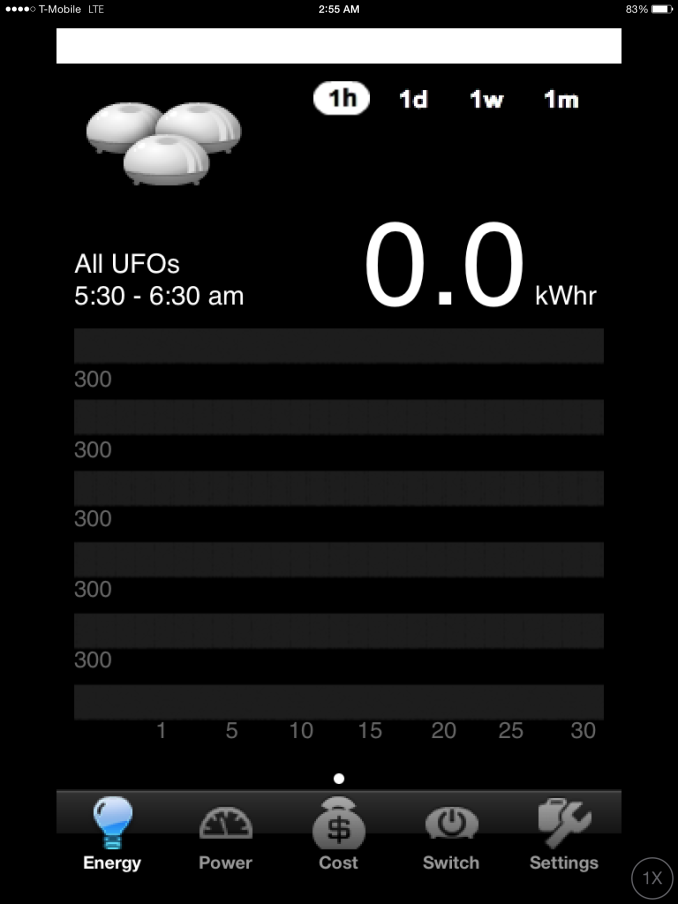
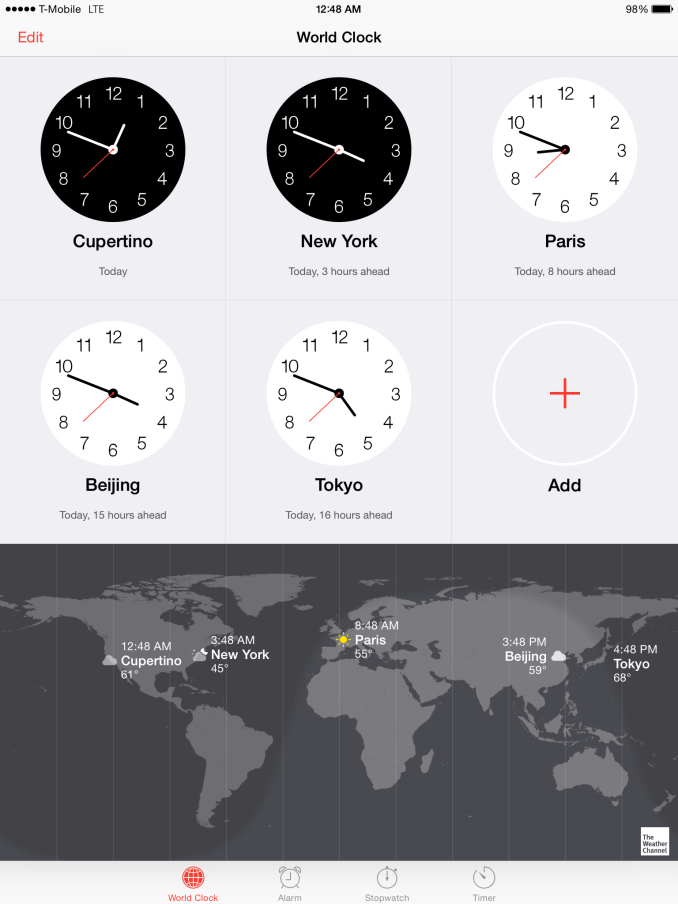
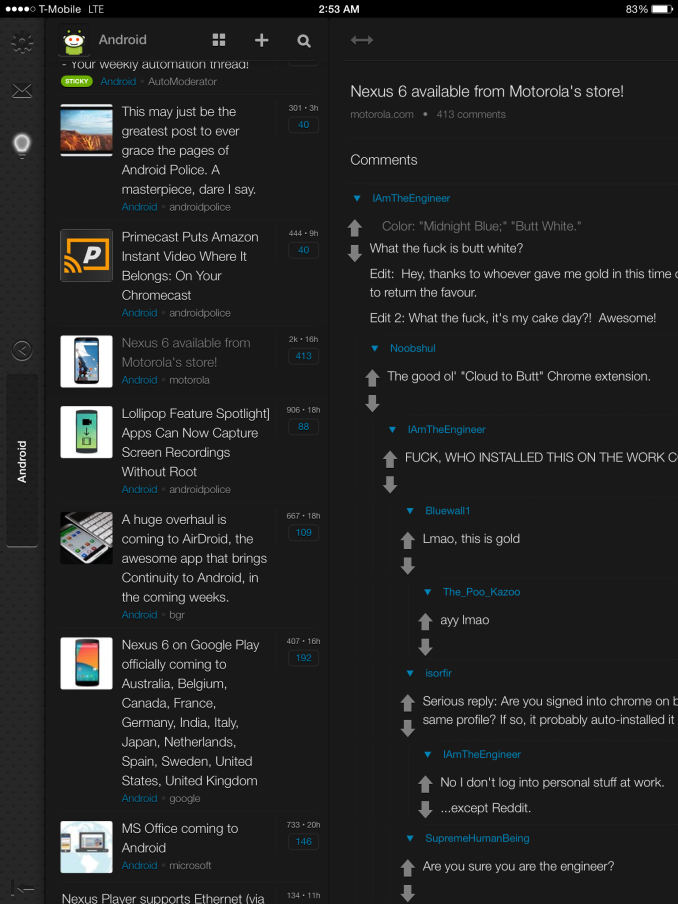

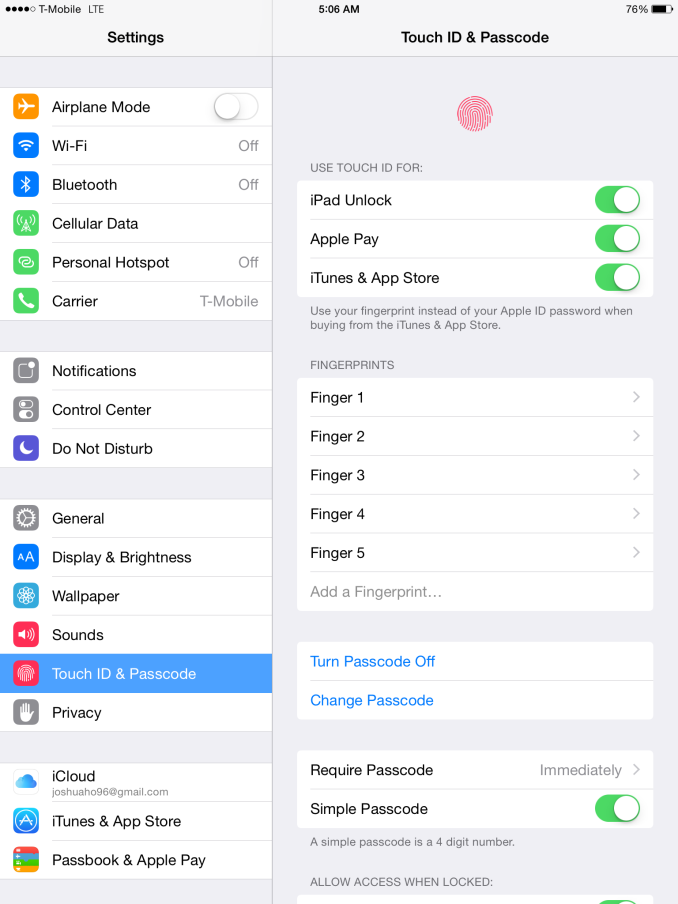








226 Comments
View All Comments
Speedfriend - Friday, November 7, 2014 - link
When I read about the A8, it make me wonder about the A7. With the A8 Apple claims to have improved energy efficiency over the A7 by 50%. Now a iPhone 6 Plus driving a 1920x1020 screen has the same 10 hour battery life as a Galaxy Note 3 which also has a 1920 x 1080 screen. But that means that if Apple had tried to build a phablet with the A7, they would have ended up with a battery life of around 6.5 hours, clearly not competitive with Samsung’s offerings.So to me it looks like Apple didn’t build a bigger screen phone before not because they didn’t feel there was demand but because they simply wouldn’t have been able to compete on battery life and that is why the whole focus with the A8 was improving efficiency rather than simply performance.
So was the A7 just very uncompetitive to other ARM designs or is iOS inefficient compared to Android.
I would love to see someone do some digging on this – Anandtech?
dmunsie - Friday, November 7, 2014 - link
I don't think this has anything to do with either the A7 design or iOS -- there are too many variables in the equation to definitively say. Plus unlike other ARM designs and Android, there is only one source for the A7 and iOS -- Apple. So you can't just take iOS and install it on the same hardware as another Android device and compare.The A7 was also used in the iPad and iPad mini last year where it got an advertised 10 hour battery life. If Apple had made a Plus sized iPhone last year, they probably would've had to make it thicker to get to their target battery life, which is probably similar to what Samsung has done with their designs. Apple never likes to go thicker if they can avoid it.
You can see how Apple values size over battery life because with the move to the A8X, the Air 2 got thinner with the same battery life vs staying the same size but with more battery life. Not saying that valuing battery live over size is better than what Apple chose, but they are clearly making it known what they are optimizing for here.
Impulses - Friday, November 7, 2014 - link
As an Android fan, I'd love to see Apple stop chasing thinness and actually improve battery life by a large degree... They could've done so with the iPhone 6 and chased the claim of "2 day battery life", but they chose thinness instead.Having Apple claiming two day battery life on a phone and destroying everything else by a large margin would definitely light a fire under everyone... Over engineering for 7mm thickness vs 8.5 mm seems quite pointless to me, anything under 9 is quite enough on a phone.
It seems structurally speaking they're better off to, e.g. bendgate...
sonicmerlin - Friday, November 7, 2014 - link
Personally I'd like my phone to be as thin as a credit card.akdj - Thursday, November 27, 2014 - link
Be state came and went in ten minutes. It's a non issueMight check those up times on the 6+ again. They reflect almost identical performance as mine. I could go two days, easily.
Speedfriend - Monday, November 10, 2014 - link
Except the note and the iPhone 6+ have the same size battery, so samsung hasn't had to use a bigger battery to get the same battery life.techconc - Friday, November 7, 2014 - link
You "analysis" fails to consider the size of the battery in existing devices as part of the equation. Likewise, your conclusion regarding the A7 design not being competitive is completely baseless. What's more, you also fail to consider the manufacturing process as a variable as well. The primary efficiency difference between the A8 and A7 has much more to do with the manufacturing process moving from 28nm to 20nm.Finally, if you wish to compare Apple's chips with the competition or iOS vs. Android in terms of efficiency, you should ask yourself why Android phones require more memory to perform the same tasks and why Android devices need such a bigger battery in order to get the same level of usage and/or performance.
Speedfriend - Monday, November 10, 2014 - link
At techconcBattery size is almost identical. Manufacturing process has absolutey nothing to do with it. Or the efficiency difference between A8 and A7. It is a fairly simply equation - at same battery size, A8 equipe diPhone 6+ gives smae battery life as Note 3/4. Swap out A8 for A7 and you would get 1/3 less battery life based on Apple's 50% A8 over A7 efficiency claim. Hence why no big iPhone before.
tipoo - Friday, November 7, 2014 - link
Yup, when I saw the teardown with two RAM banks rather than the usual one, I was expecting 25.6GB/sec, with double the pins/bits going into the SoC. And it also makes sense with the huge GPU gains, something has to feed that beast. Crazy, that's now in laptop bandwidth range.cynic783 - Friday, November 7, 2014 - link
and we made it about 10 comments before the "Anand is an Apple shill" accusation lol. so much Android butt hurt.